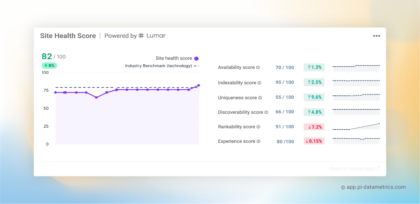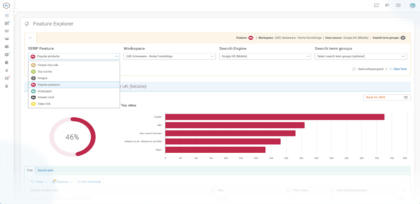What’s more valuable: Black Friday or Prime Day?
23 Jul 2018
This summer, Amazon’s made-up discount holiday ‘Prime Day’ yet again had consumers and retailers going mad for online discounts.
Prime Day started in 2015 as a summer rival to November’s Black Friday discount holiday, and since then has completely outgrown Black Friday. With $2.41bn in sales, Amazon’s Prime Day has become the main shopping holiday of the year.
What is Amazon Prime Day?
Prime customers can benefit from slashed prices, with new deals cropping up almost every 5 minutes throughout the day and a half extravaganza. An incentive, and a perk of Prime-dom. (If you’re cheeky, you’ll start your 30-day free trial of Prime on the day and reap the sweet sweet rewards...)
Prime Day 2018 was so popular that the US site crashed just 5 minutes in! This only goes to show the growing popularity of Prime Day. Amazon also had other troubles this Prime Day, with many European workers choosing to stage a walk-out. Despite these setbacks, the 2018 holiday was still a huge success for Amazon.
What’s more valuable: Black Friday or Prime Day?
Black Friday goes way back in the US; the shopping holiday kicks off every year after Thanksgiving with every retailer jumping on the discount bandwagon, looking to get a head start on their Christmas sales.
This happened fairly organically over time, growing in popularity for shops and consumers. It’s only in recent years, with globalisation and the growth of online shopping, that the UK has got onboard with this post-Thanksgiving frenzy.
Unsurprisingly, each holiday sees a major search peak during the discounted period. If we look at the last 5 years, we can see that Black Friday is wildly more valuable than Amazon Prime Day as a search term:
Black Friday has been around for decades, whereas Amazon Prime Day only began in 2015, so hardly matches the success of Black Friday. However it is fairly impressive that you can even see any peaks for Prime Day against such a well known, long standing holiday at Black Friday.
If we look at Prime Day in isolation, we can see significant growth from 2016 to 2017:
The main difference between the two holidays is that Amazon completely owns Prime Day, whereas Black Friday is participated in by all retailers. So again, we may not expect to see such huge search volumes for Prime Day.
However, it could be argued that Amazon’s holiday is forcing other ecommerce sites to slash their prices, creating a similar phenomenon to Black Friday - meaning you can snap up the best deals not only at Amazon during Prime Day.
The exclusivity of Prime Day also works to stunt its search performance, as only Prime members can participate.
Cold hard cash
Whilst Prime Day may not be doing particularly well in search when compared to Black Friday, revenues are telling a very different story.
According to Statista charts, Black Friday 2017 had an estimated revenue of $2.36bn in the US. Compare this with Prime Day 2017 where Amazon reached an estimated $2.41bn worldwide.

Source: Statista
Amazon released a statement on Wednesday claiming that this year's Prime Day sales surpassed Cyber Monday, Black Friday and the previous Prime Day, within the 36 hour period.
If Prime Day sales in 2017 where only just surpassing Black Friday sales in the US, and this Prime Day sales have completely out done Black Friday sales, we can see that Amazon’s holiday has grown exponentially in the last year.
Amazon’s dominance
According to eMarketer, this year Amazon will account for 49.1% of the ecommerce market in the US, and already controls nearly 5% of the whole US retail market (online and offline).
In the UK, Amazon is now the 5th biggest retailer according to Globaldata. It is estimated to have accounted for 33.5% of all online spend in 2017.
Whilst Amazon started as a bookseller, they now offer products from a variety of sectors, doing particularly well in electricals.
Using the Pi' SEO Platform competitor discovery tool, this chart shows Amazon’s dominance within the UK electrical market for the most popular tech of 2018:
In fact, Amazon appears three times in this Google UK chart; Amazon.co.uk, Amazon.com and Amazon.in.
Opportunity for others
Prime Day provides a platform for smaller businesses to benefit from Prime’s customer base. Small and medium sized businesses exceeded more than $1bn collectively in sales this Prime Day, according to Amazon’s press release.
It’s not only other ecommerce sites that are benefiting from Prime Day. Publisher sites are also providing ‘Best deal’ pieces and even tips on how to get the best discounts. Many of these articles have direct links to the product on Amazon, which goes some way to explaining Amazon’s authority and dominance in Google - backlinks are a big ranking factor.
Although existing for just 3 years, Prime Day is taking over the traditional discount holidays, yet again finding new ways to dominate the online retail market.
[icon-cta-banner colour='jazzberry-jam' headline="Flights UK | Market Leaders " icon='/wp-content/uploads/2018/07/icon_leaderboard.svg' cta_action='/resources/market-leaders/flights-uk/' cta_text='View now']
[/icon-cta-banner]
Get a demo
For more insights on Amazon's share across global markets, or to assess your own performance, don’t hesitate to get in touch - book your demo.
Never miss a post
Join our mailing list and have our SEO news delivered straight to your inbox.
Never miss a post
Join our mailing list and have our SEO news delivered straight to your inbox.







